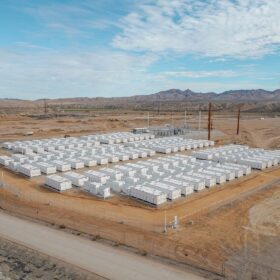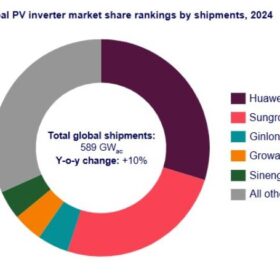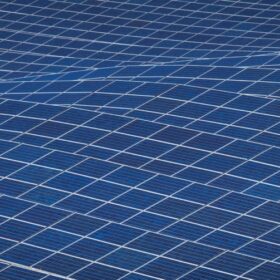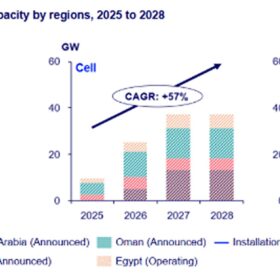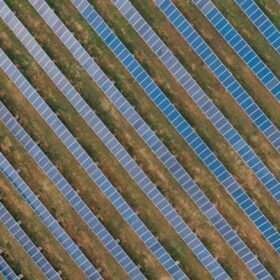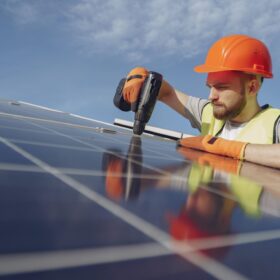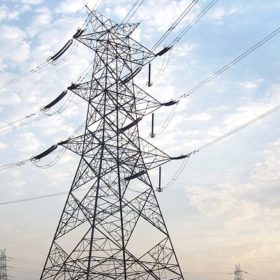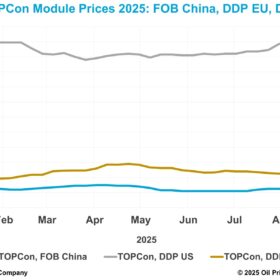US grid-scale storage leaps 63%, residential 132%
A report from the American Clean Power Association (ACP) and Wood Mackenzie indicates the utility-scale energy storage sector added 4.9 GW in the April-to-June quarter, representing 63% year-on-year growth, while residential storage increased by 608 MW.
Huawei leads global inverter market as shipments hit 589 GW in 2024
Chinese companies made up nine of the 10 largest global inverter suppliers in 2024, with total inverter shipments reaching 589 GW (AC), according to Wood Mackenzie.
Global shipments of solar trackers rise 20%, U.S slips in market share
The United States continues to dominate the solar tracker mount market, with Nextracker securing the top spot globally in 2024.
U.S. solar manufacturing booms in Q1 while uncertainty looms
The increased manufacturing capacity supports the growing solar generating capacity, with solar and storage accounting for 82% of all new generating capacity added to the grid. However, the House bill coupled with rising tariffs threaten the trajectory.
Large-scale solar projects facing outsized risks
Obsolescent technology, serial defects, maintenance difficulties, and grid connection limitations are all creating unique risk management problems for North American solar.
Middle East, North Africa solar manufacturing capacity to reach 44 GW by 2029, says WoodMac
Wood Mackenzie forecasts the Middle East and North Africa region will emerge as a tariff haven and overtake Southeast Asia as a top solar export hub, becoming the primary exporter of solar panels to the US towards the end of this decade.
U.S. solar capacity expected to triple in next 10 years
Wood Mackenzie cautioned that policy uncertainty could significantly alter its projections for solar industry growth.
Are robots coming for solar installer jobs?
Robots on solar sites are not new; they have been deployed to automate everything from operations and maintenance to inspection and cleaning. In recent months, there has been an uptick in interest in robots for installation, particularly among utility-scale solar developers dealing with staff shortages, safety concerns, rising costs, and pressure to build.
‘Solar module prices will soon go back to over $0.12/W’
The global solar module industry is expected to regain a sustainable balance in the next six months, Yana Hryshko, head of Solar Supply Chain Research for Wood Mackenzie, told pv magazine. She explains why solar module prices may increase soon, suggesting that Tier 1 modules prices could reach $0.14-$0.15/W by the end of this year, and discusses how consolidation is materializing within the global PV industry.
U.S. solar installations to drop 30% in 2025, said EIA
After a record 37 GW of new solar added in 2024, the Energy Information Administration expects 26 GW in 2025 – and even less in 2026.
